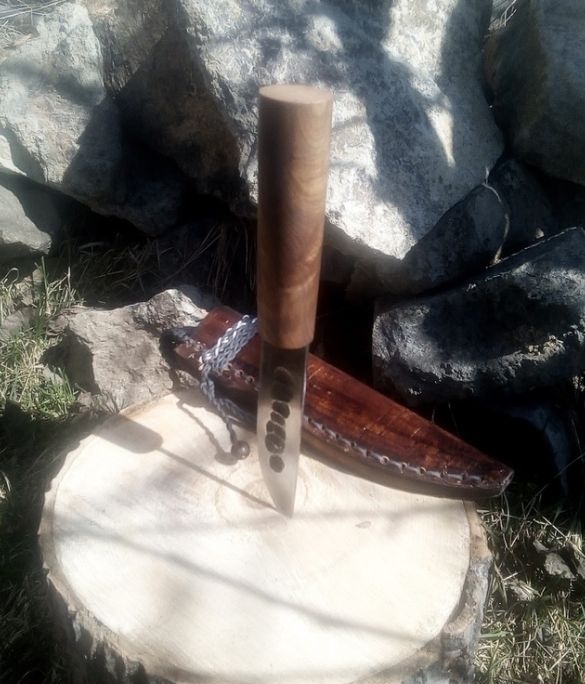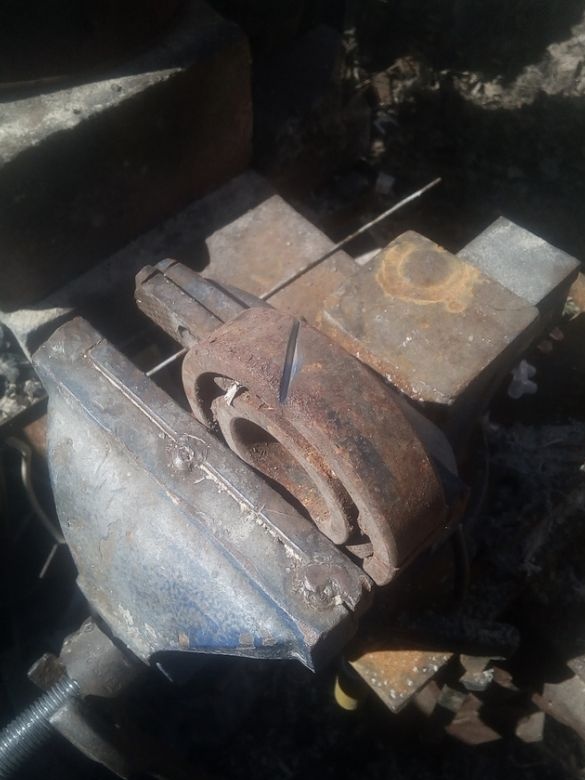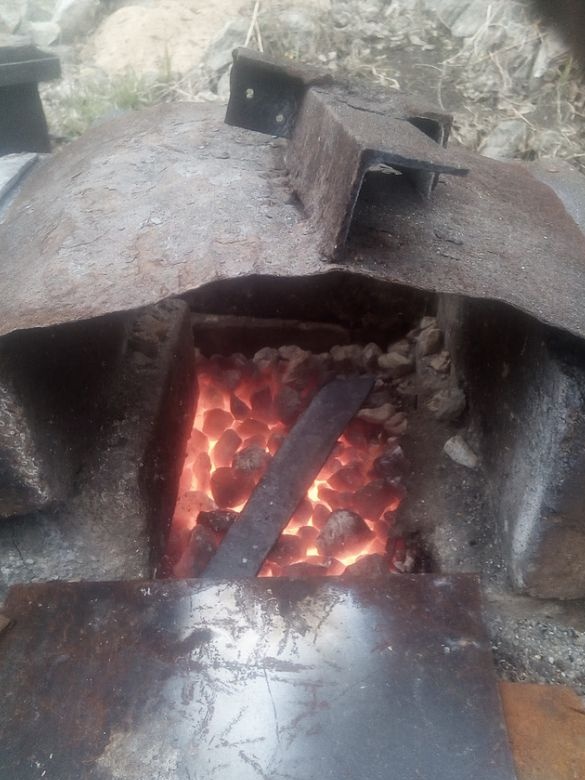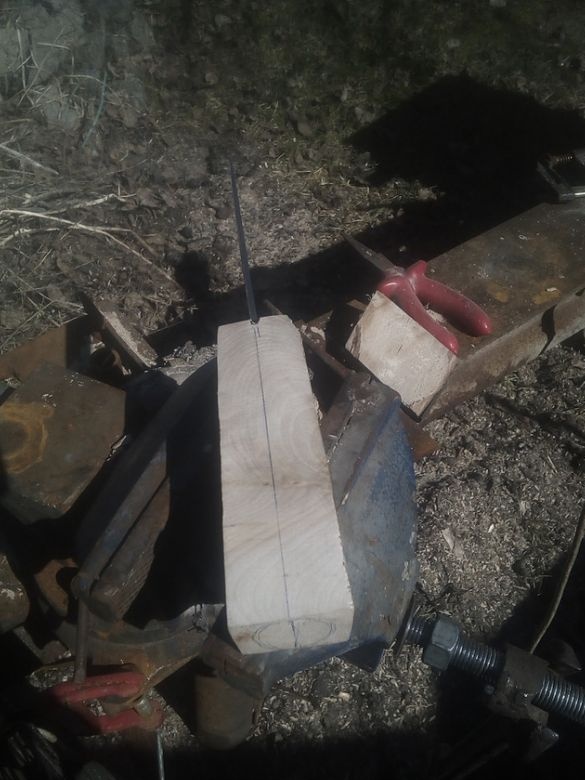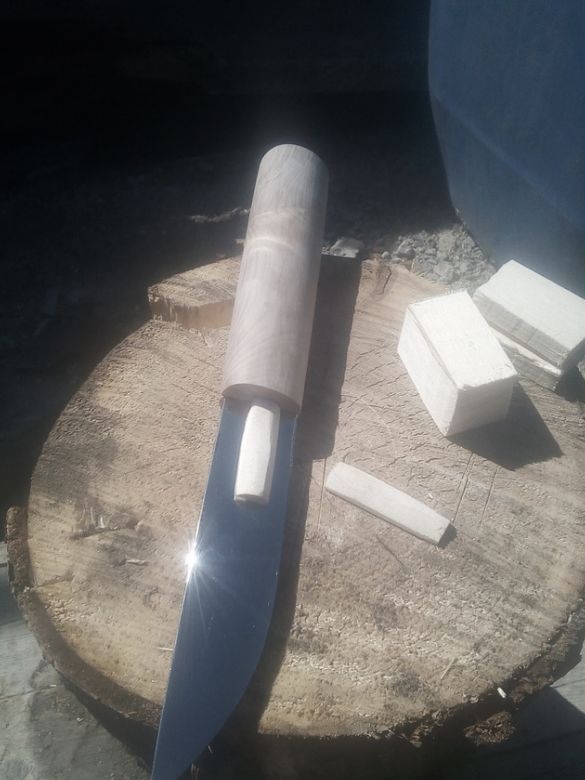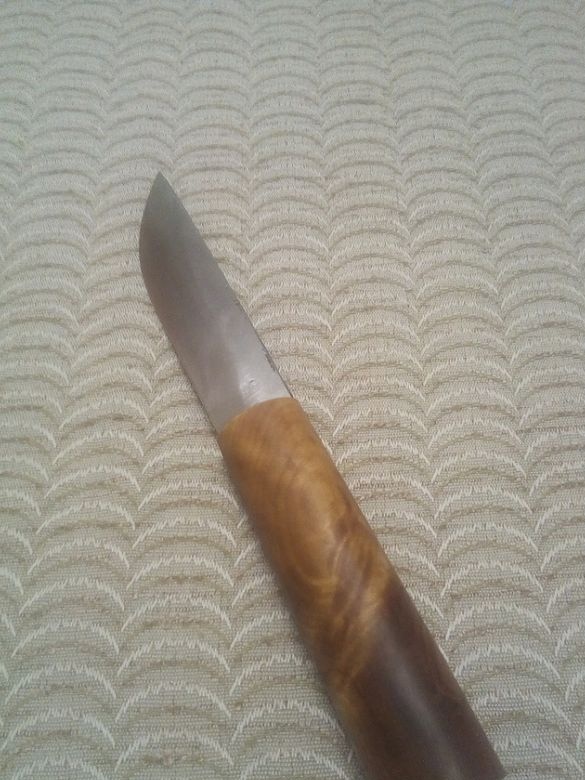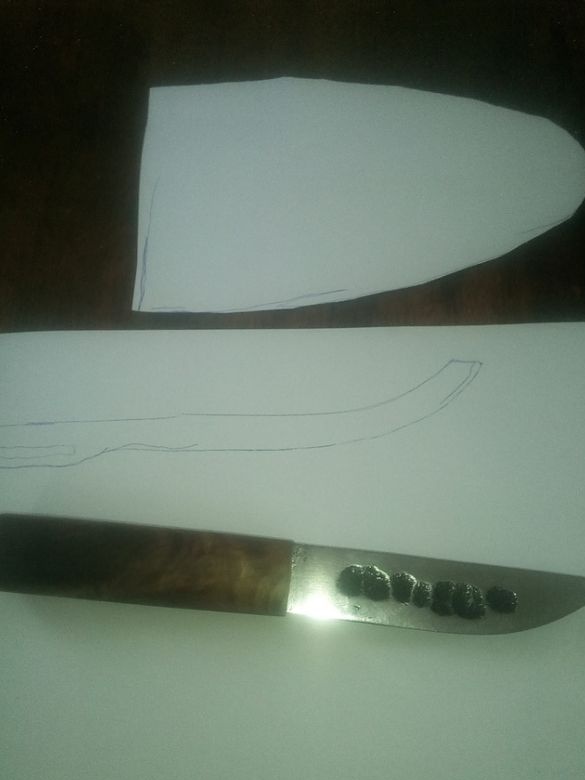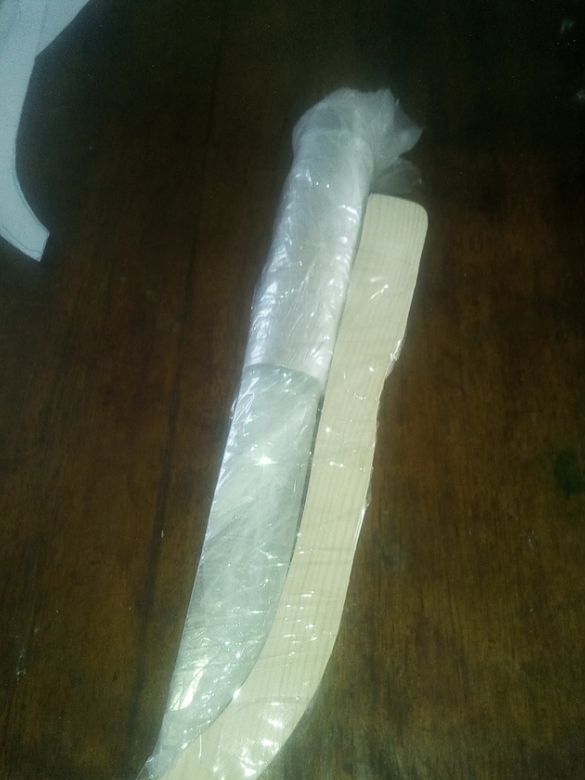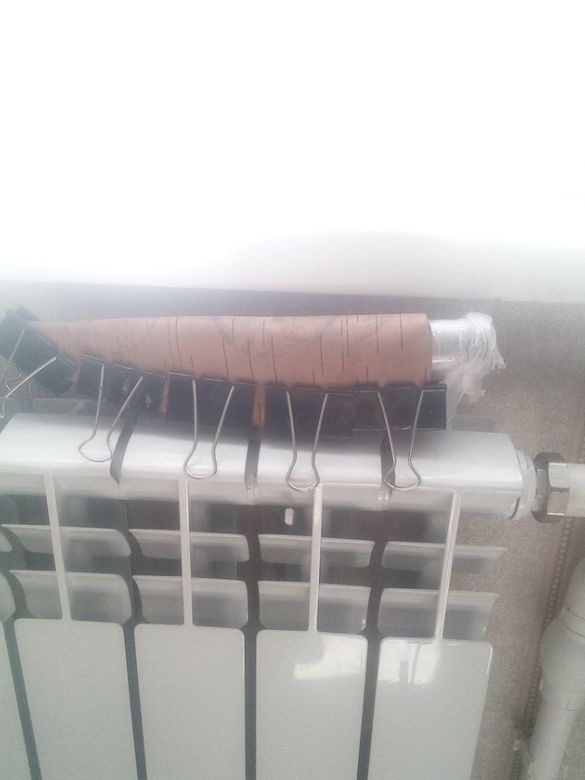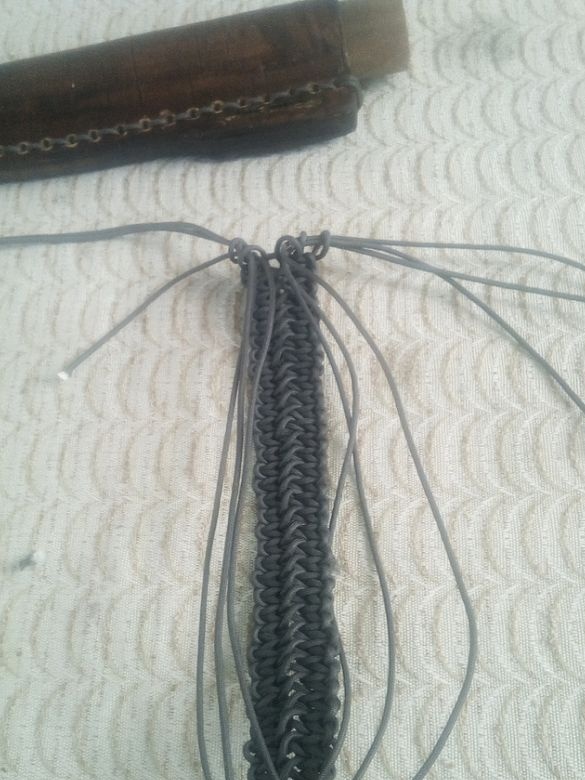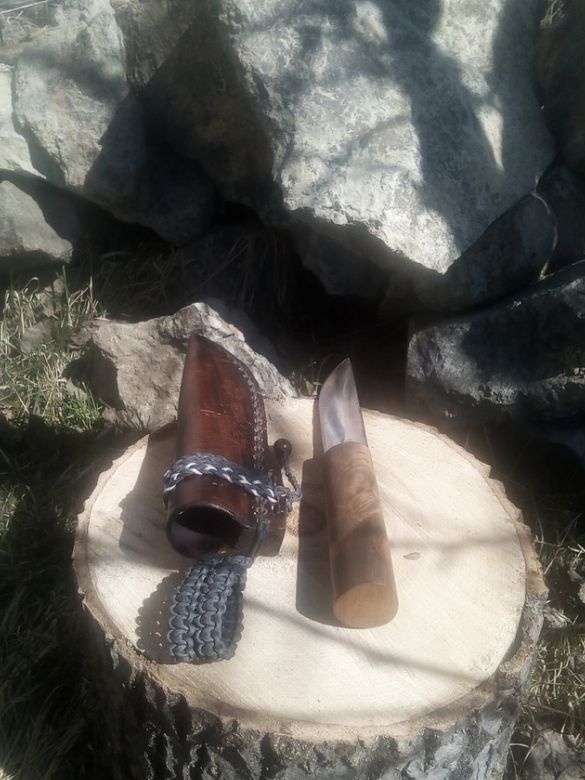I bring to your attention the traditional knife of Yakutia. This is one of the most recognizable knives in the world. Its feature is that this knife has a simple and reliable design. There are no bells and whistles and other things, it is made exclusively for solving life's difficulties. This knife has a lot of purposes, it can be used as a regular household knife, as a hunting knife, for fishing, tourism and so on.
In total there are three types of such knives, and they are distinguished by the length of the blade. So, for example, a small knife is a tool whose blade has a length of 80-110 mm, it is intended for women and children.
A knife with a blade length of 110-170 mm can be considered the most common. As for blades more than 170 mm, combat knives are already considered and they are rarely made.
There is another rare variant with a blade length of 500 mm, and the blade has a curved shape, but in fact it is a sword.
In this instruction, we will look at how to make a Yakut knife do it yourself. The author decided to forge the blade from the bearing race, making it very durable. The process of making a knife is not complicated, but requires experience and patience. In addition, we will consider how to make birch bark sheaths for this knife. So, we start production!
Materials and tools used by the author:
Material List:
- bearing cage;
- birch suvel, salt water, pine sawdust (for the handle);
- linseed oil;
- birch bark or leather for sheath;
- kapron cord;
- PVA glue;
- a paracord.
Tool List:
- belt sander;
- grinder;
- forge furnace;
- hammer and anvil;
- vise;
- scissors, paper, pencil;
- sandpaper;
- files and more.
The manufacturing process of the knife "Yakut":
Step one. Prepare the bearing
First of all, we will find a suitable bearing. Here, the size of the bearing will depend on how long the blade you want to receive. The author clamps the bearing in a vice and makes a cut of the cage. You need to cut diagonally, so it will then be easier to form the tip of the knife.
Next, you will need to open the clip and straighten, for these purposes it will be necessary to anneal the metal, after which it will become soft. For firing, we send the bearing to the forge and heat it red, and then let the bearing cool down gradually. In an hour, the bearing should lose 20-60 ° C, this parameter applies to steel ШХ15. Usually, the metal is simply left in the furnace and allowed to cool with it.
Step Two Forging
Now you can start forging, the temperature for each steel is selected individually. So, for example, for ШХ15, a temperature of 800-1100 ° C is used. At this temperature, the metal has a color cast from cherry to red.
A distinctive feature of the Yakut knife is that it has a dol, and the knife is sharpened only on one side. At the same time, the dol is located on the opposite side of the bevel. Thanks to the blade, the blade gains high strength. We choose the sharpening side depending on whether you are right-handed or left-handed. To break the dol, you will need to make such an adaptation as the author. That is, we take a steel ball of suitable diameter and weld a piece of reinforcement to it, which will be a handle.
Also form rough bevels on the knife by forging.
After forging, we will need to normalize the metal, remove internal stresses. Otherwise, the blade may crack during further processing and even with a slight temperature difference. To do this, we heat the steel to a temperature of 800-950 ° C and allow it to cool on a flat surface in air.
Step Three Locksmith work
Now we go to the belt sander and form the final profile of the blade. You can also use a grinder, files, sandpaper and so on. After normalization, the metal will not be strong and will be easily processed. It is important to know here that before hardening it is impossible to make the blade thinner than 1 mm, otherwise the blade will lead when hardening, and this is very unpleasant.
At this step, do not polish the blade, because after hardening it will still have to be cleaned.
Step Four Heat treatment
It is a very crucial moment in the manufacture of the blade - this is heat treatment. Thanks to this, we will fix the desired hardness of the knife. The author smoothly warms the blade to a temperature of 830 ° C, this is the lower hardening threshold for this steel grade. We bring the magnet to the metal, if it does not react, excellent, the steel is ready for hardening. This temperature will need to withstand for some time based on the calculation that for every 1 mm of thickness it will take 1 minute. This will allow the metal to warm evenly. Well, then lower the knife into the oil, it must be preheated to a temperature of about 50 degrees. Oil is suitable for automobile or vegetable.
After hardening, the blade must be let go, otherwise the metal will be brittle. But thanks to the vacation, the steel will spring and will not break under heavy load. For vacation, we send the blade into the oven, heated to a temperature of 200 ° C. In this mode, the knife must be kept for 1.5 hours, and then let the oven cool with the knife. That's all, they made a vacation, let's try the blade is not hardness. Try to scratch it with a file, if there are no scratches or very few, then everything is done correctly.
Step Five We make the handle
We begin to make a pen, its author decided to make it from a birch suvel, these are such formations on a tree that look like tumors. This material must be boiled in salt water with the addition of pine sawdust.
Next, cut the desired workpiece and dry. The handle at the Yakut knife is solid, the blade is attached with two pegs. Thanks to such a simple design, everything turns out firmly and reliably, and you can always quickly replace the handle if it suddenly breaks.
Next, we form the shape of the handle, first we use knives for woodcarving. Well, then work on a belt sander or manually using sandpaper. We achieve this result so that the handle becomes perfectly smooth. In conclusion, it is important for us to take care of protecting the wood from moisture. Soak it with linseed oil. If the oil is heated, it will absorb better. Now our pen is protected and looks great! If desired, it can still be polished with wax.
Step Six Birch bark scabbard
In general, according to tradition, the sheath for Yakut knives is made of wood, and on top they are covered with oxtail skin. Of course, such material can be difficult to find, so the author decided to make a sheath for his knife from birch bark. This material is good in that it is very light, does not leak moisture, and the knife in these sheaths, according to the author, is fixed quite reliably.
Next, we make two templates. The one that is the largest is cut out of birch bark. Birch bark must first be cooked for about two hours, after which it will become soft. As for the small template, we cut it out of a thin board. Such boards are usually used to make boxes in which fruits are transported. Now take a knife and wrap it with foil, attach a wooden profile to the knife. From above, then we install our template from birch bark and install the clamps. We give the whole thing to dry so that the birch bark accepts the desired profile. Next, take PVA glue and smear it with enough material, again tighten everything and let the glue dry.
The author decided to paint the scabbard with a stain, since after the clamps there were traces. It should be noted that water stain is not suitable for this. At the end, we drill holes in the stitch and braid the nylon rope.
You can wear such a knife on a belt, for this you can make a strap. If you know how to weave belts from a paracord, you should not have any problems with this. Sharpen your knife to the state of the blade using wet sandpaper or special fixtures for sharpening. That's all, the project is over, I hope you liked the knife. Good luck and creative inspiration, if you want to repeat this. Do not forget to share your best practices with us!

